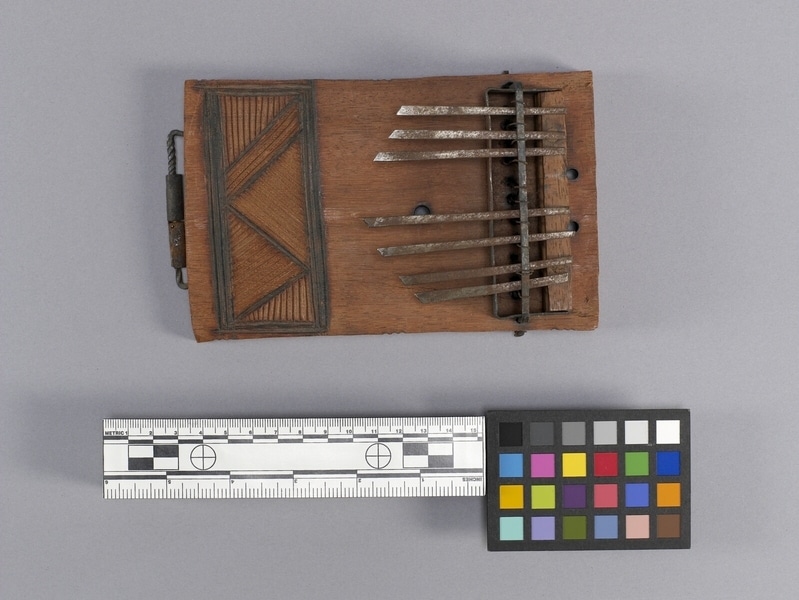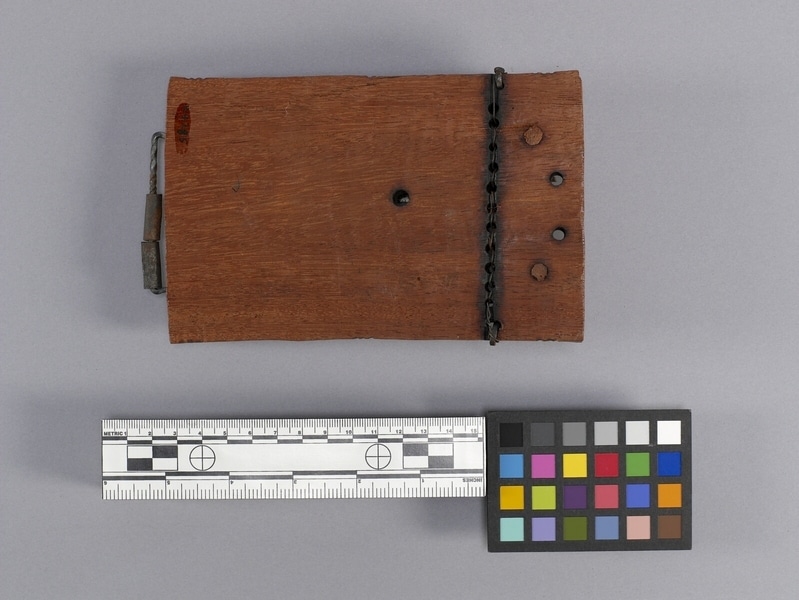Thumb Piano Item Number: K4.285 from the MOA: University of British Columbia



Description
Thumb piano made from a rectangular block of wood with seven metal prongs raised up from the wood by a strip of wood and a bent metal strip, and secured with bent metal bar that is secured to the wood with metal wire. A ridged geometric design with a triangular motif has been carved into the top face, parts of which have been burnt. Three sets of three burnt lines decorate each of the two longest sides. There is one larger hole at the centre of the wood block, and there are two smaller holes in the wood block above the strip of wood. A bent metal bar with two metal cylinders on it is attached at the bottom edge.
History Of Use
The sanza, or mbira (Shona language) is a plucked idiophone (or lamellaphone) that has been in use for thousands of years, and is played widely throughout the African continent. It is known by many different names, e.g., kilembe, likembe, kadono, akogo, timbrh, and thumb piano and has undergone variations, such as the kalimba, but the general style and function remain consistent. The instrument has been played for both secular and ceremonial use, e.g., around the fire during social evenings, or to commicate with the ancestors.
Item History
- Made in Angola
- Collected during 1950
- Owned by Anne E. Copithorne before November 14, 1973
- Received from Anne E. Copithorne (Donor) on November 14, 1973
What
- Name
- Thumb Piano
- Identification Number
- K4.285
- Type of Item
- thumb piano
- Material
- metal and wood
- Manufacturing Technique
- carved
- Overall
- height 3.5 cm, width 10.3 cm, depth 17.2 cm
Who
- Culture
- Southern African
- Previous Owner
- Anne E. Copithorne
- Received from
- Anne E. Copithorne (Donor)
Where
- Holding Institution
- MOA: University of British Columbia
- Made in
- Angola
When
- Collection Date
- during 1950
- Ownership Date
- before November 14, 1973
- Acquisition Date
- on November 14, 1973
Other
- Condition
- fair
- Current Location
- Case 100
- Accession Number
- 0251/0014